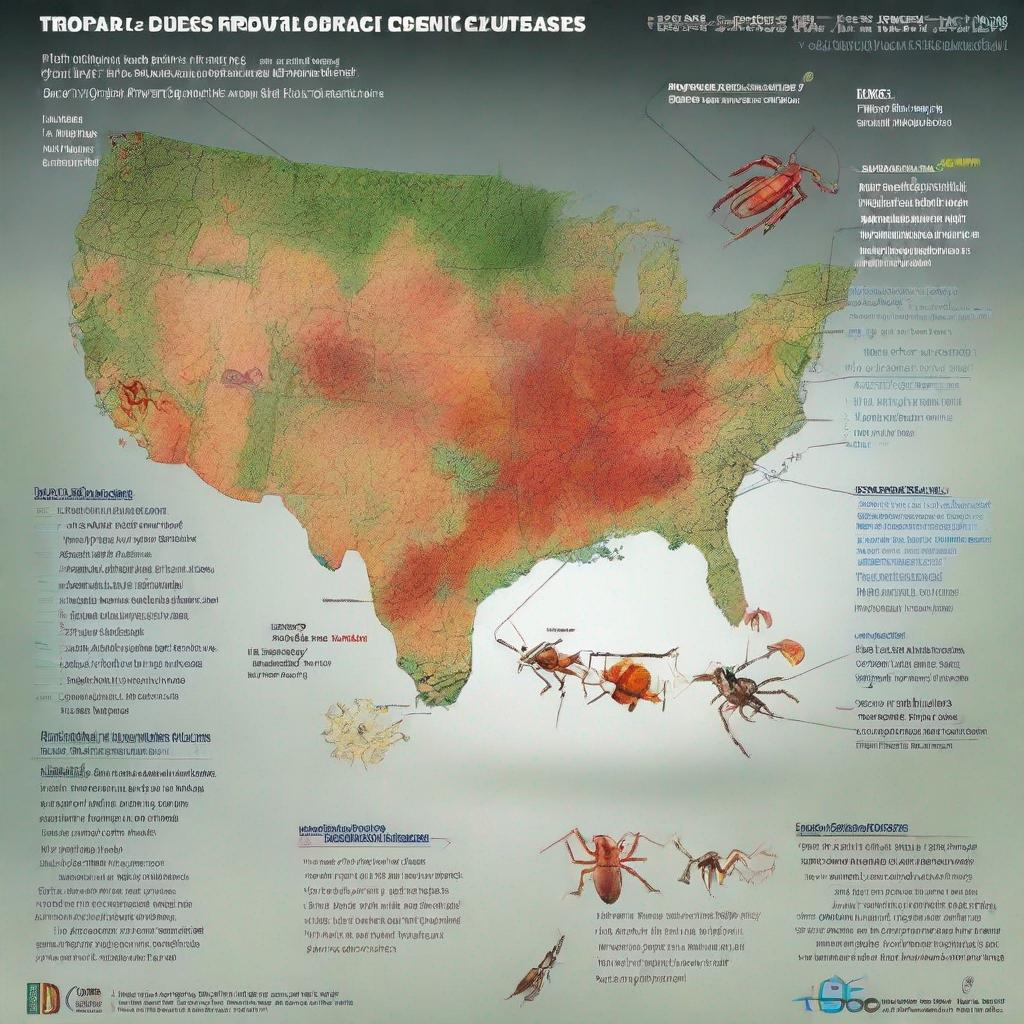## Tropical Cluster Diseases: A Comprehensive Overview
**Introduction**
Tropical cluster diseases (TCDs) are a group of infectious diseases that are prevalent in tropical and subtropical regions. These diseases are typically transmitted by mosquitoes, ticks, or rodents and can cause a wide range of symptoms, from mild to severe.
**Symptoms**
The symptoms of TCDs can vary depending on the specific disease, but common symptoms include:
* Fever
* Chills
* Headache
* Nausea
* Vomiting
* Diarrhea
* Rash
* Fatigue
* Weakness
* Muscle aches
* Joint pain
* Bleeding
* Shock
**Diagnosis**
Diagnosing TCDs can be challenging, as the symptoms can mimic those of other diseases. Tests that may be used to diagnose TCDs include:
* **Blood test:** This test can detect antibodies to the disease-causing organism.
* **X-ray:** This test can reveal lung damage or other abnormalities.
* **CT scan:** This test can provide detailed images of the brain, lungs, and other organs.
* **MRI:** This test can provide even more detailed images of the brain and spine.
* **Biopsy:** In some cases, a biopsy of affected tissue may be necessary to confirm the diagnosis.
* **Lumbar puncture:** This procedure involves collecting a sample of cerebrospinal fluid to test for signs of infection.
* **Electrocardiogram:** This test can monitor the heart’s electrical activity and detect abnormalities.
**Prevention**
Preventing TCDs involves taking steps to avoid exposure to the disease-causing organisms. These steps include:
* Using insect repellent
* Wearing long sleeves and pants when in areas with mosquitoes or ticks
* Getting vaccinated against preventable diseases, such as yellow fever and Japanese encephalitis
* Avoiding contact with sick people
* Practicing good hygiene, including frequent hand washing
**Treatment**
Treatment for TCDs depends on the specific disease. Common treatments include:
* **Antimalarial drugs:** These drugs are used to treat malaria.
* **Antiviral drugs:** These drugs are used to treat viral infections, such as dengue fever and yellow fever.
* **Antibiotics:** These drugs are used to treat bacterial infections, such as Lassa fever and Ebola virus.
* **Intravenous fluids:** These fluids are used to replace lost fluids and electrolytes.
* **Blood transfusions:** These are necessary if the patient has lost a significant amount of blood.
* **Respiratory support:** This is used to help patients with breathing difficulties.
* **Dialysis:** This is used to filter waste products from the blood if the kidneys are not functioning properly.
**Complications**
TCDs can lead to a number of complications, including:
* **Multi-organ failure:** This occurs when multiple organs, such as the liver, kidneys, or lungs, stop functioning properly.
* **Encephalitis:** This is inflammation of the brain.
* **Meningitis:** This is inflammation of the membranes that surround the brain and spinal cord.
* **Myositis:** This is inflammation of the muscles.
* **Thrombocytopenia:** This is a decreased number of platelets, which can lead to bleeding.
* **Leukopenia:** This is a decreased number of white blood cells, which can weaken the immune system.
* **Anemia:** This is a deficiency of red blood cells, which can lead to fatigue and weakness.
* **Hyponatremia:** This is a decreased level of sodium in the blood.
* **Hypokalaemia:** This is a decreased level of potassium in the blood.
* **Metabolic acidosis:** This is a condition in which the body’s pH level is too low.
* **Sepsis:** This is a life-threatening infection that can lead to organ failure.
**Related Terms**
* **Arbovirus:** A virus that is transmitted by arthropods, such as mosquitoes or ticks.
* **Flavivirus:** A type of arbovirus that causes diseases such as dengue fever and yellow fever.
* **Hemorrhagic fever:** A disease that is characterized by bleeding and fever.
* **Encephalitis:** Inflammation of the brain.
* **Meningitis:** Inflammation of the membranes that surround the brain and spinal cord.
* **Myositis:** Inflammation of the muscles.
* **Thrombocytopenia:** A decreased number of platelets.
* **Leukopenia:** A decreased number of white blood cells.
* **Anemia:** A deficiency of red blood cells.
* **Hyponatremia:** A decreased level of sodium in the blood.
* **Hypokalaemia:** A decreased level of potassium in the blood.
* **Metabolic acidosis:** A condition in which the body’s pH level is too low.
* **Sepsis:** A life-threatening infection that can lead to organ failure.
**Conclusion**
Tropical cluster diseases are a serious public health concern, especially in developing countries. These diseases can cause a wide range of symptoms and complications, and they can be fatal if not treated promptly. By understanding the symptoms, diagnosis, prevention, and treatment of TCDs, we can help to protect ourselves and our communities from these devastating diseases.




